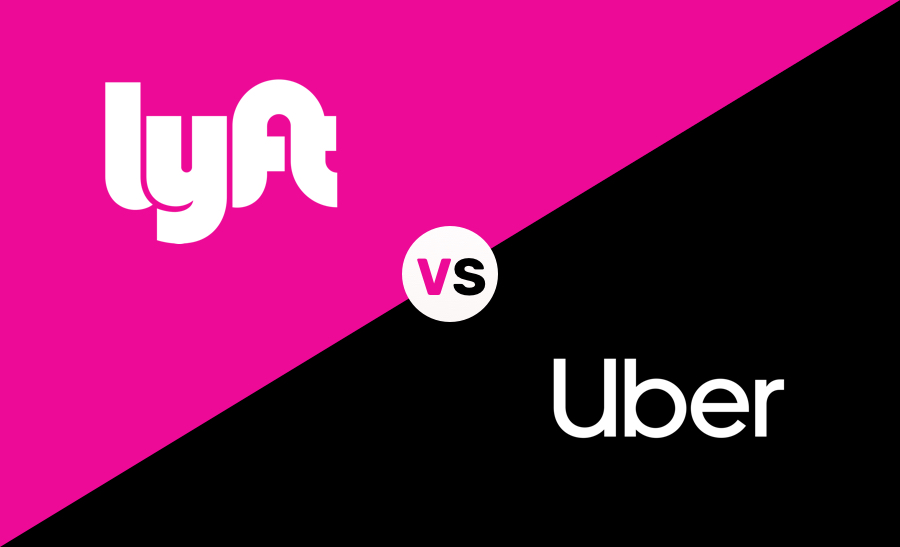Those who have never used ride-sharing apps like Lyft and Uber may wonder what the distinction is between the two. Both provide a way for users to request a ride from a nearby driver, but there are some key differences. Here’s a look at some main distinctions between Lyft and Uber.
Pricing
Lyft tends to be cheaper than Uber, particularly in cities where there is a lot of competition between the two companies. Although ride-sharing pricing is pretty flexible based on demand, Lyft generally maintains lower prices than Uber.
Vehicle style
While both companies offer clean and comfortable vehicles, Lyft emphasizes luxury vehicles more, with drivers often driving SUVs or other upscale models. Uber, meanwhile, emphasizes newer cars that are less flashy but still reliable and well-maintained.
Driver incentives
In many cities worldwide, Lyft offers drivers additional discounts for buying certain types of car insurance or for partnering with specific credit card companies. Meanwhile, Uber offers bonuses for drivers to recruit new members and encourage them to continue driving with the company.
Ride time
Lyft tends to have a shorter wait time than Uber, sharing rides around busy cities like New York or San Francisco, mainly because its driver pool is smaller in these areas on average. However, one criticism of Lyft is that it can take much longer to find a ride during off-peak hours than Uber since there are fewer available cars on the road at any given time.
App functionality
Both apps work well in terms of functionality, though they differ slightly in how they offer navigation and route choices for riders. Some people prefer the slick design of the Uber app, while others prefer the more straightforward way one can rent a car for Lyft on their app.
Driver quality
Both companies strive to hire drivers who are friendly and professional. Still, there can be variations in driver quality from city to city and even within the same city over time. Some riders find that Lyft drivers tend to be friendlier than Uber drivers. In contrast, others feel that Uber drivers tend to be more professional and reliable with less risk of aggressive driving or other unwanted behavior.
Safety features
Both companies have robust safety features, including background checks for all drivers and monitoring systems that alert passengers and drivers when there has been an accident or emergency during a ride. However, some riders may choose one company over another based on the individual features they offer, such as the real-time ability to share one’s location with a friend or family member.
Safety rating
Because passengers have the option of giving feedback on their rides after each trip, both companies work hard to ensure that drivers maintain good safety ratings and are not penalized for negative feedback unless it is justified. A driver with consistently high ratings from riders may be eligible for certain perks, such as higher pay rates or preferred scheduling options.
Customer support
Lyft has been praised for its excellent customer support teams, which tend to be more responsive and knowledgeable than Uber’s customer service team. However, this advantage could shift over time if Uber makes changes to improve its support services.
Social impact
Lyft has a strong focus on social responsibility, and many of its ride-share drivers are part of the “Lyft Community Champions” program that offers discounts to low-income families and environmental initiatives such as offering an option to offset carbon emissions from a trip. While not wholly ignoring this area, Uber tends to be less focused on these issues now.
Corporate history
Uber was founded in 2009 by Travis Kalanick and Garrett Camp, while Logan Green and John Zimmer founded Lyft in 2012 based on their frustration with unreliable taxi services in San Francisco. This difference in timing has shaped each company’s identity and its differences compared to the other.
Numbers
Uber has reportedly been valued at over $60 billion and is one of the most valuable tech startups in the world, while Lyft’s valuation remains closer to $7-$8 billion at this time. Although many believe that Lyft represents a legitimate threat to Uber’s dominance as a ride-sharing company, it remains significantly smaller in revenue and global reach.
At the end of 2017, Uber had nearly 2 million drivers signed up worldwide compared to just under 400,000 for Lyft around the same time frame. But with both companies continuing their rapid growth trajectory, these numbers could change quickly over the coming years.
At the end of the day
With all these distinctions between Lyft and Uber, it is easy to see why choosing the right ride-sharing company can be a big decision. Both companies have their strengths and weaknesses, but the best choice will ultimately depend on individual rider preferences and needs.
For example, if safety is essential for you, you may opt for Lyft because of its strong reputation in this area. But if you have a large group of people traveling together and need a high volume of rides each day, Uber may be your best option due to its greater size and infrastructure.
Ultimately, whichever company you choose will provide a high-quality experience that will meet your needs!




